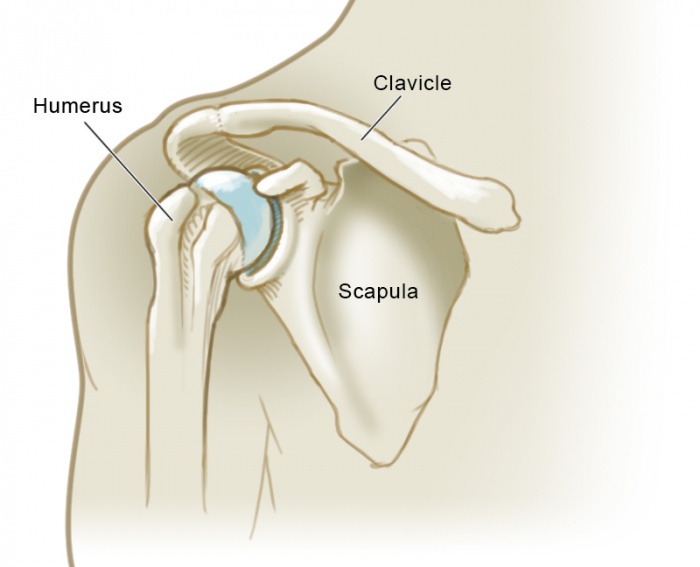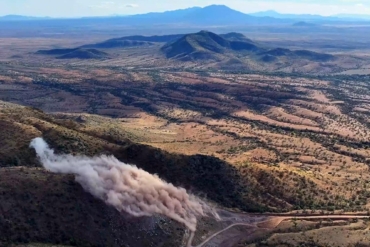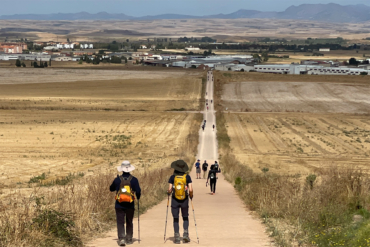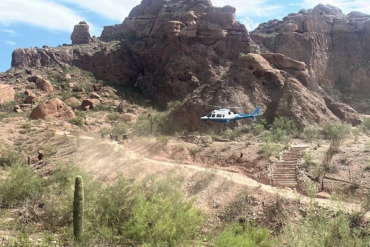The shoulder is the most mobile joint in the body – and the most likely to dislocate. What would you do if you dislocated a shoulder in the backcountry?

Over the holidays, a buddy and I were alone in Oregon’s Owyhees, riding miles from the nearest ranch. A freeze-thaw-freeze cycle transformed the backcountry byway into a mud pit, with strips of ice lining the ruts. Carefully negotiating a path, my friend’s bike abruptly spit out from under him. He fell, rolled, and finally laid on the ice, writhing in pain.
Just prior, he had spent the latter half of his cyclocross season rehabbing a dislocated shoulder. This fall partially dislocated it once again. Fortunately he rolled back over it in such a way that it popped the shoulder back into place.
We finished the ride, but the story could have had a very different ending. It had us asking a few questions about what we would have done if it hadn’t remedied itself.
What It Is
The shoulder is a “ball-and-socket” joint where the scapula and clavicle come together to support the upper arm. The shoulder is the most mobile joint in the body, an honor that comes at a price. Limited supporting structures make it susceptible to injury.
A dislocation occurs when a force to the shoulder forces the arm bone to slip out of the socket, causing immobility and pain. A subluxation occurs when the humeral head only partially pops out of the socket.
How To Identify
A dislocoated joint will look and feel unnatural. You will likely notice:
- A deformed shoulder with a bump looking out of place
- Bruising and swelling
- Intense pain
- Immobility of the arm
- Potential scrapes on the skin where the impact knocked the shoulder out of its socket
You might also notice the armpit feels out of place. Nerve damage can be common; be aware of any tingling or loss of sensation. Muscle spasms may also occur, making relocation of the shoulder harder as the muscles tighten up. Surrounding soft tissue can also rupture (tear) during a dislocation, complicating rehabilitation.
How To Avoid
Nobody plans for a dislocated shoulder, but you can do a few things to stack the odds in your favor.
- Be aware of conditions that might cause a fall. This is especially true when you are tired and hungry. This is when the mind lapses and is more willing to take risky shortcuts.
- Wear protective gear when participating in contact sports like downhill mountain biking.
- General strength training and stretching can keep your muscles stronger and joints more injury free.
Treatment
After any fall, it’s wise to take a break for a few minutes to assess the situation. The body could be in shock, masking additional injuries.

Shoulder reduction should not be attempted unless you are a trained professional as it can cause further damage. Despite what you see in movies, do not tug on the arm or slam it against a wall.
If you have assessed that the shoulder has been dislocated, and a trained person is on site, reducing the dislocation (putting it back in place) generally has better outcomes. Muscle spasms can tighten around the shoulder girdle, increasing pain and making it harder to pop the arm back into place after time has passed.
One GearJunkie editor, who has had multiple dislocations and subluxations, found his own self-treatment.
“I happened upon this method while on a camping trip, and it’s worked every time since my second out-of-socket experience,” said Adam Ruggiero. “Start by relaxing your arms as much as possible. Then, while standing, bend at the waist and allow your arms to hang in front of you. Slowly straighten back up, letting your arms fall to your sides. The affected shoulder should gently slide back into socket.”
Once the shoulder has been reduced, fashion a sling to support and stabilize the arm around the torso. A recently dislocated shoulder is more likely to dislocate again.
If the arm is not able to be reduced by a professional:
- Immobilize. Splint or sling the shoulder in its position.
- Ice can reduce pain, swelling, and any potential internal bleeding.
- NSAIDs can reduce pain and swelling.
- Evacuate the patient. They should see a doctor as soon as possible to evaluate additional damage.
If this is the first time a dislocation has occurred, the patient should see a doctor for prompt medical evaluation.
Worst-Case Scenario
A dislocated shoulder can be extremely painful and make it impossible to walk out with a pack. But the pain should immediately subside after reduction.
The bigger issue is a repeat injury. In general, the younger you are, the more likely you are to dislocate the shoulder again. Repeated injuries may loosen the surrounding tissue and require medical intervention.








